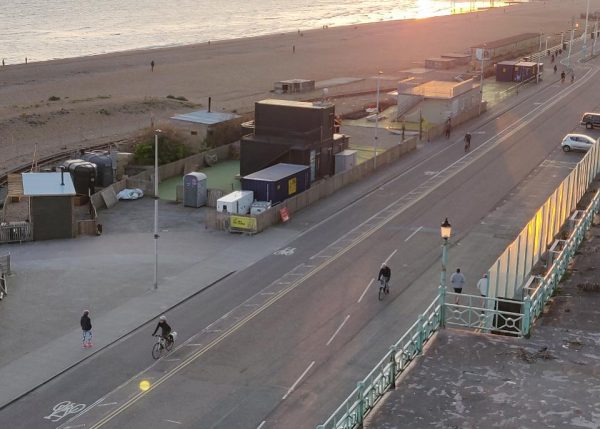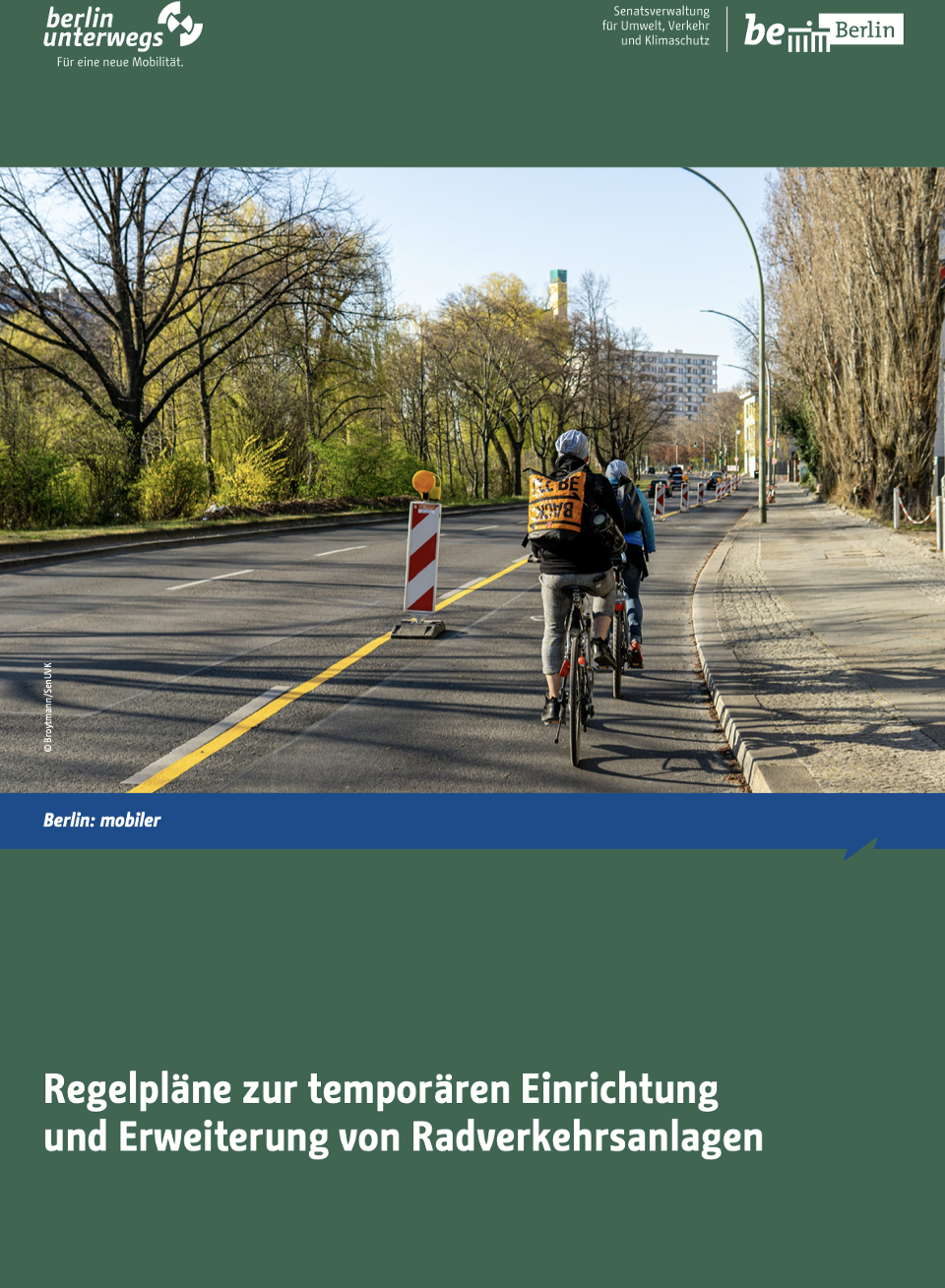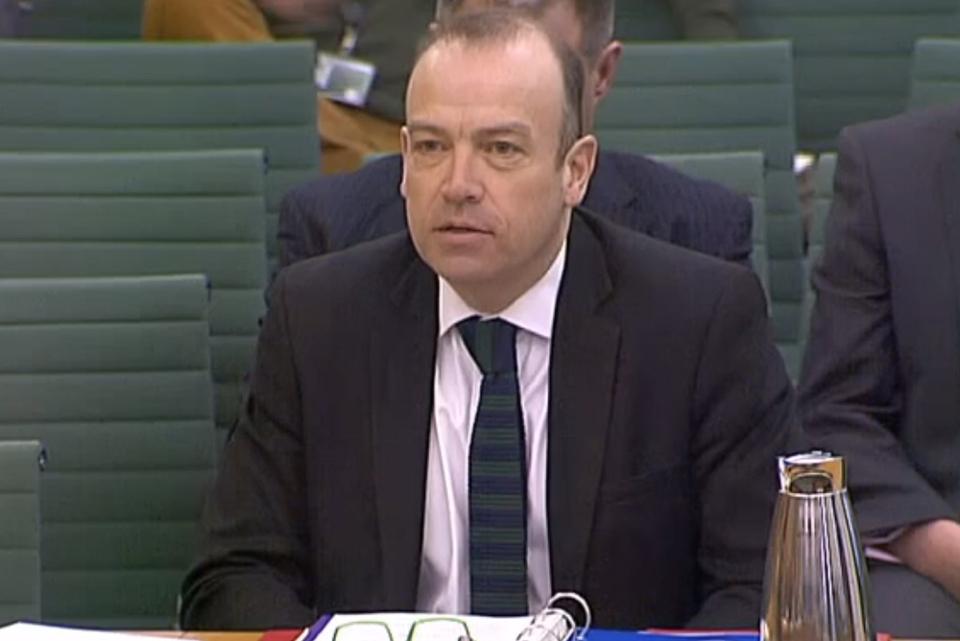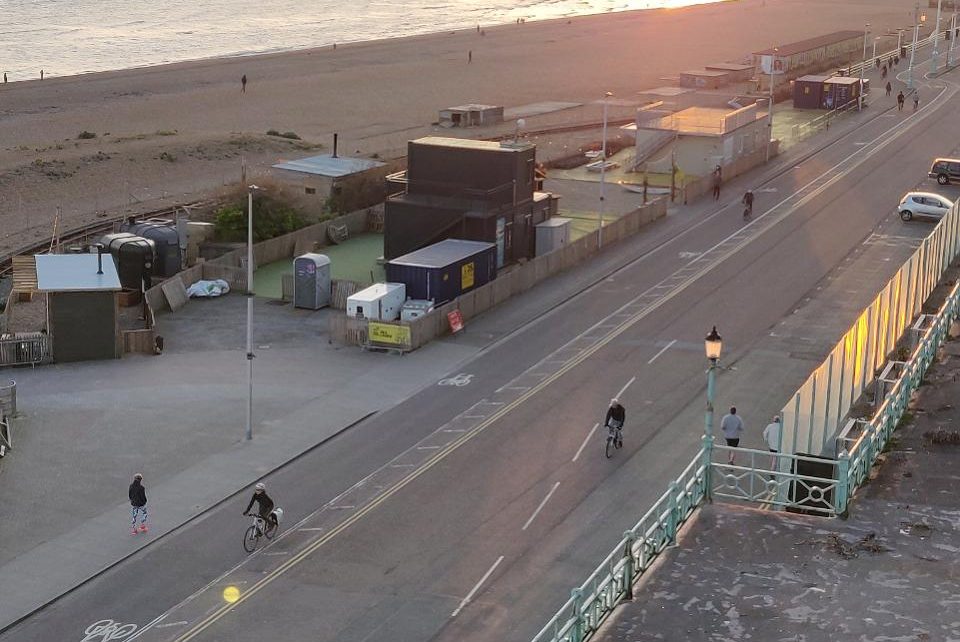
Madeira Drive, Brighton, will be for pedestrians and cyclists only from Monday, 8am to 8pm.
The U.K.’s Department for Transport (DfT) has loosened its rules to enable roads to be closed to motor traffic and given over to pedestrians and cyclists during the duration of the coronavirus lockdown.
Extra space for people enables key workers and others to maintain two meters of physical distance when walking or cycling.
Typically, any change of use for roads in England has to be enabled by local authorities issuing “Traffic Regulation Orders”—these usually take time to implement, have to be publicized through advertisements in local newspapers and by notices on site, and can be stymied by objections.
The new rules—announced on April 16— will be “withdrawn once conditions allow,” states the DfT.
Brighton has been quick to take advantage of the emergency rules. From Monday, April 20, Madeira Drive, a major seafront thoroughfare, will be closed to motor traffic, and open only for those on cycles or on foot.
The DfT’s rule change gives local authorities the power to quickly and easily make roads car-free, widen footways, or install temporary cycle lanes. English towns and cities will now be able to join with Berlin, Bogota, Vancouver, and many other urban areas around the world that have been giving over road space to cyclists and pedestrians during the pandemic, providing people with the sort of generous space generally allotted to motorists.
“Practising social distancing is making us all aware of the importance of public spaces and making us rethink how we use them,” said Councillor Anne Pissaridou, chair of the Brighton and Hove Council’s environment, transport and sustainability committee.
“We are considering other locations to see if we can extend this to other roads in the city,” she added.
Mark Strong, a Brighton-based transport planner, welcomed the council’s action:
“The cycle track and [sidewalk] on Madeira Drive are not wide enough for people to keep two meters apart, so this will be a great help,” he told me by email.
The seafront road is “also near to the Royal Sussex County Hospital so [making it car-free] will help NHS staff when they travel to work or get out for a well-earned rest,” he stressed.
The new guidance on Traffic Regulation Orders (TROs) “has been produced in response to concerns about the ability of traffic authorities to implement the publicity requirements when making permanent or temporary TROs during the current crisis,” said a DfT statement.
Local authorities will no longer have to go through a time-consuming and often fractious process to close roads to motor traffic—they will be able to impose emergency TROs with a minimum of advance notice and little recourse to objections.

State of Berlin’s emergency cycling infrastructure guidance.
The State of Berlin in Germany has closed many roads to motor vehicles and published a guide on temporary cycle provision. New York, Washington, D.C., Vancouver and other North American cities have created emergency cycle lanes and sidewalks during the lockdown. Oakland, California, has closed 10% of its public highways to through traffic. New Zealand was the first country to provide national funding to enable cities to create or widening sidewalks and bike lanes during the pandemic.
The DfT’s new guidance has been welcomed by U.K. cycling and walking organizations, but the loosening of planning rules does not go far enough, states an open letter sent to transport minister Chris Heaton-Harris on April 17.
“With the large increase in people, including children, cycling and walking, it’s clear that many street layouts across the U.K. are not currently fit for purpose during the pandemic,” states the letter, penned by Brompton Bicycle CEO Will Butler-Adams, and supported by senior executives from Cycling UK, British Cycling, Sustrans, The Ramblers, London Cycling Campaign and the Bicycle Association.

Transport minister Chris Heaton-Harris. (Photo by House of Commons/PA Images via Getty Images)
The letter—also supported by one of the largest NHS trusts in England—wants Heaton-Harris to provide a ministerial statement encouraging English highway authorities to implement temporary initiatives for cycling and walking. The group, which includes the Director of Public Health at Barts Health NHS Trust, believes that these measures would have a positive impact in encouraging more health workers to cycle to work, and would also support social distancing for the increasing number of people cycling and walking for exercise in line with the government’s public health recommendations.
“We have vast amounts of currently underused road space which can be temporarily reallocated at low cost,” states the letter.
“In order to mitigate against a second wave influx of Coronavirus cases, we feel it prudent to plan ahead and implement these temporary measures now for key workers but also to allow the wider population to travel by bicycle or by foot in the short term as lockdown restrictions lift.”
The letter urges the minister to “give local authorities the confidence to quickly implement measures, enabling safe cycling and walking within the government’s social distancing guidelines.”



